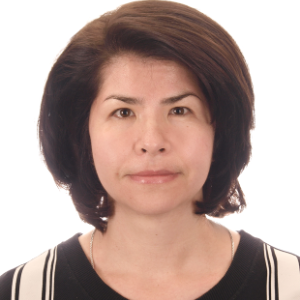Title : E-beam sintered materials for catalytic membranes with selective hydrogen permeability
Abstract:
Last decade proton conducting mixed oxides have been extensively studied as application in the different electrochemical devices (fuel cells, separators, etc.). Membranes with selective hydrogen permeability based on them can also be used to remove ?2 from products of catalytic reactions (synthesis gas), for example, ethanol steam reforming, which increases efficiency of reactors. Ceramic-metal composites with high mixed proton-electron conductivity have a great potential for use in catalytic membrane reactors, since they meet requirements of high thermal and mechanical strength along with chemical stability in the working media. The metal phase increases the electronic conductivity and reactivity in the surface processes of hydrogen exchange, while ceramic phase, in addition to ionic conductivity, contributes to the mechanical strength of the composite. Lanthanide orthoniobates, tungstates and scandates are promising materials for hydrogen separation membranes due to their high protonic conductivity. Nanocomposites were prepared by treating in the high-power planetary ball mill a mixture of mixed oxides (Nd5.5(Mo,W)O11.25-δ, La0,96Sr0,04ScO3 ? LaNb0,8Mo0,2O4) calcined at 700ºC and NiCu alloy with addition of isopropanol. The powders were pressed into pellets and then sintered using conventional thermal sintering as well as radiation -thermal sintering using e-beams at 1100 °C. The influence of the structure of nanocomposites and sintering conditions on the transport properties of obtained materials was investigated. According to XRD, in nanocomposites the main phases of scheelite LaNb0.8Mo0.2O4, perovskite La0.96Sr0.04ScO3 and fluorite Nd5.5(Mo,W)O11.25 were observed. No chemical interaction between alloy and mixed oxide nanoparticles was observed. The oxygen mobility studies by temperature-programmed heteroexchange with C18O2 revealed two types of bulk oxygen migration channels related to two phases in samples.


